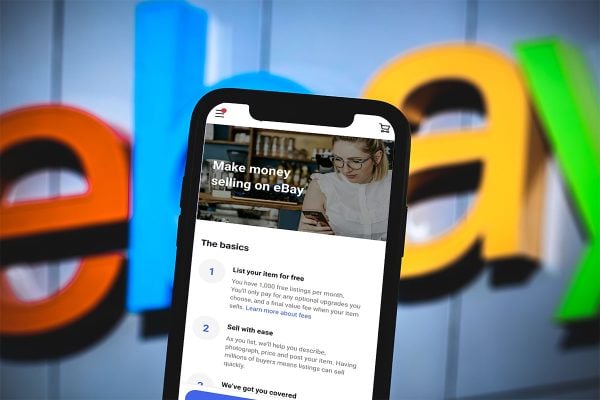You probably know what your best sellers are on eBay, they may be the same as your top sellers on Amazon and your own website too, but , suggested that there’s just as much (if not more) money to be made from rarer slow selling products.
The theory goes that as online selling is very low cost in comparison to bricks and mortar stores the cost of holding large inventories becomes affordable. This is none more so than when the product is digital with no warehousing required. Retailers could make money by offering obscure products via the Internet as there would always be someone who would buy.
An article in today’s Times turns that theory on it’s head – far from being an almost endless source of products that buyers are searching for, the long tail has been found to be a derelict back alley, full of junk that no one wants.
According to the Times there are around 13 million music tracks available online, but 10 million of them didn’t manage a single sale in the last year. It’s even worse for albums, from 1.23 million available only 173,000 were ever bought with 85% failing to get a sale.
The long tail was lauded as an untapped gold mine where collectors could source that long lost item. That’s not proving to be the case, at least not for music downloads, where 80% of all revenue came from the top 52,000 (top 0.4%) tracks.
Where does this leave online sellers? The 80/20 rule has traditionally been accepted, 80% of sales come from the top 20% most popular products. The long tail suggested that the remaining 80% obscure products could generate just as much if not more income, each individual product may not sell as often but everything would sell a few.
It’s important to realise that there is always a cost to inventory, whether it be the cost of uploading and cataloging 10 million music tracks that no one will ever buy, or whether it be physical warehousing for slow moving stock.
The are definitely sales to be won from holding a wide selection of inventory but there’s also a big risk that relying on an ever expanding range to increase sales will probably end in failure. Someone, somewhere might buy that long lost track some day, but is it worth the cost of several million more sitting on the shelf gathering dust that will never sell?
Whilst it’s certainly true that you can buy almost anything on eBay, the question has to be asked do you want to sell almost anything on eBay? Would you rather stock and sell fast moving popular lines, or do you want to hold 13 million items, 85% of which won’t sell even once a year, to take advantage of the long tail?









22 Responses
The example of music downloads isn’t a very good one as downloads are not collectable, so rare tracks are not any more valuable than common tracks.
The long tail principal works with physical collectables, but pricing has to reflect the fact that a low percentage of items listed will sell.
#1 You wouldn’t believe how many cables I’ve got that are probably worth more for the copper than spending the (tiny!) 5p fee to list em on eBay
I think the long tail principal only works for a few types of item on ebay as you have to pay a fee for every item listed, which negates the fact that you don’t have to pay for vast bricks and morter display areas as you would have had to do in the old economy.
It works best on personal websites as it costs little more to list 100,000 items than it does to list 100 items.
It may not be particularly applicable to cables though as I would imagine many become obsolete too quickly to make it pay.
I sell collectable records and the long tail principal works very well in that market.
Bad analysis here.
The long tail is the 150,000 albums of the 173,000 that aren’t sold in stores. And you have to put the 1.2m up to see which of the 150,000 people might want to buy.
Your denominators are way too big to start talking about 80/20.
The long tail is alive and well and naysayers are at risk.
Hi Chris
Your cables long-tail example needs a context.
I spoke to Gaz about it on the phone a few minutes ago because he had a PC repair and build centre in Berkshire through the 1990’s – he says his “showroom” had a 30-foot wall dedicated to cables, connectors and adapters with the pegboards being 8-foot high. That’s a lot of “bits” on display.
He explained his logic as being two-fold – first that it gave his engineers a visible check of stock items effectively instantly (both for what was moving and what was simply low on stock) and that it gave then a huge range of products to draw upon when they were fixing or upgrading, and very rarely did they have to tell a customer they’d have to order a part and couldn’t fix their computer until next day.
The other more sales oriented logic was that even the non-techy customers gained confidence in the business when they say the “huge” inventory of parts on display, and the self-upgraders knew they could drop by anytime and purchase pretty much whatever it was that they were looking for, instantly.
Those two situations meant that for the display wall inventory, the 80/20 and long-tail revenue worked well. But more importantly, it became a marketing feature in itself because people would visit the centre to buy a 59p or 99p cable, then mooch around and buy something more expensive too – such as a 50 quid memory module (it was the 1990s remember) or a 3-quid set of cheapo speakers for an interim solution (sound wasn’t the “must-have” then that it is now).
There’s an old marketing adage that if customers can’t see what you’ve got, they can’t buy it. New style warehouse shops that have a counter with no dividing wall between it and the warehouse racking are driving customers to ask “Have you got ….” but with a wall between them, customers cannot see how much inventory you hold and might just not bother asking or visiting.
Online, as Rob said at #3 – own webstores are the place to put your 80% of inventory, because as you said at #2, the cost of putting it on eBay or other sites charging an insertion fee just becomes crazy. If using no-insertion fee sites, then rotate products from the 80% between your own webstore and the venue – gradually people will come to realise it’s worth asking you “Have you got …”
Digital products are an entirely different kettle of fish. EVERYTHING you have available needs to be listed in as many locations as possible, digital product sellers have to be seen to have everything available including the kitchen sink. They have to be seen as specialists who know what’s available and have got it. If not, they’ll never be asked “Have you got ….”
eBay completely mishandled the digital products position. Instead of banning them, they should simply have rejigged eBay Express to be digital products ONLY, and removed them from the core market place in that manner – then they could have had their cake and eaten it too.
By the way, don’t forget that eBay Italy does still allow digital products to be listed, but there are a few rules attached – if anyone wants details, gimme a shout and I’ll point you at the location of the English translation of the rules.
Ed
we have an old fashioned hardware store in our village
its like the tardis,
if they dont have it it is not on the planet, in the nuts ,bolts, tools ,and small household items line,
you can walk in and ask for simply anything and the guy that runs the place hands it too you ,
we go there rather than B& Q or any of the bigger chains
slightly more expensive than B& Q etc. but cost effective in time and fuel
so a large stock attracts business in this case
the trick is not to hold stock that owes you money
“from 1.23 million available only 173,000 were ever bought ”
But isn’t that part of the point of long tail – you just know it will be available because everything else is, withought the 1.23m the 173,000 might not have been sold if only 200,000 were only ever available, and there is always a chance an obscure item will sell.
I think this applies well to your own website and maybe not ebay because of the fees.
If it something more unusual then people are more likely to search on google for it and if not many people sell it and you optimse your site correctly then it will sell.
I have done alot of keyword research this year to look for items that people may only search for 100-200 times a month and if I can stocked that product and gone to page one straight away. I not only get good traffic from that but also alot of sales to, plus they will often buy other things to while they are at the site.
Also what you say about the dowloading of songs isn’t this because the large proportion of people that would download are younger and so not intrested in older tracks like Cliff Richard……….lol
Stu
I’m not familiar with the long tail but would this be the strategy of a diamond powerseller considering that they get to list for free or very close to it?
When the long tail worked the best on ebay, espicially for me was when a SIF was £0.08 to list, with the current fee structure it is not workable in the long run.
I am lucky that I get asked for things completely different to the item they looked at and asked the question on, the whole long tail is ideally suited to the internet, but not ebay at the moment!
Two tails…
One tail is hard to find items that sell slowly.
The other is easy to find items that no-one wants.
I think that has been missed or not understood in the original article.
So if you are going to have a long tail, make sure it is made up of items that only you have.
If your tail is the same as 20 other peoples tails, then your tail will not stand out…
Mark
(A long tail seller).
I think the current ebay fee structure was set up, in part, to encourage long tail sellers. 1p listings if you have enough stock to warrant paying the £350 anchor shop subscription.
At that price, it becomes much more feasable to list tens of thousands of obscure items, but it only works for ‘long tail sellers’
#11 Excellent point.
I don’t list most ex chart records. They tend to be poor selling, common records which everybody else has on sale and nobody sells. You need a tail mainly made up of products that nobody else has and that way you can also price accordingly.
I wish I had a long tail, but I never expected to discuss that in this forum! 🙂
Merry Christmas & Happy New Year.
Well Done to the tamebay team for keeping us up to date on ebay and life in general. What would we do without you?
Of course, if you had any old Police albums that hadn’t shifted for the last ten years, that’d possibly be a Sting in the tail.
(I’ll not even bother with the Long Tail Sally pun).
I can see the idea…
We have loads of ‘bits and bobs’ in boxes somewhere that occasionally get brought but running a business that way…
Nar – won’t make financial sense.
Thousands of businesses, including Amazon, are run that way Adam
Is the long tail anything to do with tall stories, by any chance?
I’ll get my coat.
#18 Amazon is run by keeping “loads of ‘bits and bobs’ in boxes somewhere that occasionally get brought”? I think not Rob.
# 20. Quote from an ex Amazon guy:
I use to work at Amazon.com on the personalization features that fuel the long tail. Here’s how I described the long tail to a marketing guy who didn’t get it (and thought we should focus more on bestsellers): “We sold more books today that didn’t sell at all yesterday than we sold today of all the books that did sell yesterday.”
Amazon can hold a large inventory because they have a consistent stock movement. There website can also support a large inventory (in terms of design). Lines are consistently being cleared and dropped by Amazon. Long tail for Amazon is not about bits & bobs which may one day sell.